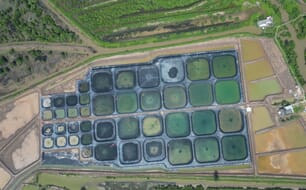Derrick Dalley, Minister of Fisheries and Aquaculture, announced C$85,000, to continue a research effort that has involved Memorial University, the Canadian Centre for Fisheries Innovation, and representatives from the Aquaculture industry.
“Sea lice poses a significant threat to aquaculture operations worldwide, and so this research could be of great benefit to provincial aquaculture sites that are generating more than C$100 million in economic activity each year,” said Minister Dalley.
“There is evidence from aquaculture operations in Norway and Scotland that certain types of fish can be used in salmon cages to mitigate sea lice effectively, and so the Provincial Government will make $85,000 available so that industry and research experts can explore whether cunner and lumpfish can do that here.”
Cunner and lumpfish are considered to be “cleaner fish,” a type of fish that clean other species and eat parasites. The Provincial Government provided C$51,600 to support earlier phases of research into the use of cleaner fish to protect commercially farmed salmon. If the research proves successful, it will identify a remedy for sea lice that is both cost effective and ecologically sound.
“The industry is very excited about the potential for cleaner fish to offer a new and environmentally benign pest management tool that would complement our efforts to address sea lice,” said Cyr Couturier, Executive Director of the Newfoundland Aquaculture Industry Association.
“This research may give our industry a global competitive advantage, and so on behalf of the association, I thank the Provincial Government for its support.”
The Provincial Government’s overall investment in aquaculture has helped create employment for approximately 1,000 people, and helped double aquaculture production market value so that it now exceeds C$100 million annually.
Budget 2013: A Sound Plan, A Secure Future included a C$2.2 million investment in Fisheries Technology and New Opportunities Program, which has promoted innovation in our billion dollar fishing and aquaculture industry by assisting more than 200 research and development projects since 2008.





